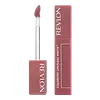Covergirl Outlast All Day Lip Color Custom Reds Versus Revlon Colorstay Limitless Matte Liquid Lipstick
What's inside
What's inside
 Key Ingredients
Key Ingredients

 Benefits
Benefits

 Concerns
Concerns

 Ingredients Side-by-side
Ingredients Side-by-side

Isododecane
EmollientTrimethylsiloxysilicate
EmollientDimethicone
EmollientDisteardimonium Hectorite
StabilisingPropylene Carbonate
SolventPropylparaben
PreservativeMica
Cosmetic ColorantCI 15850
Cosmetic ColorantTitanium Dioxide
Cosmetic ColorantCI 19140
Cosmetic ColorantIron Oxides
Blue 1 Lake
Cosmetic ColorantCI 75470
Cosmetic ColorantSucrose Polycottonseedate
EmollientOzokerite
Emulsion StabilisingBeeswax
Emulsion StabilisingTocopheryl Acetate
AntioxidantTocopherol
AntioxidantPropyl Gallate
AntioxidantAcetyl Glucosamine
Skin ConditioningCocos Nucifera Oil
MaskingAloe Barbadensis Leaf Extract
EmollientTheobroma Cacao Seed Butter
EmollientButyrospermum Parkii Butter
Skin ConditioningSodium Saccharin
MaskingAroma
Isododecane, Trimethylsiloxysilicate, Dimethicone, Disteardimonium Hectorite, Propylene Carbonate, Propylparaben, Mica, CI 15850, Titanium Dioxide, CI 19140, Iron Oxides, Blue 1 Lake, CI 75470, Sucrose Polycottonseedate, Ozokerite, Beeswax, Tocopheryl Acetate, Tocopherol, Propyl Gallate, Acetyl Glucosamine, Cocos Nucifera Oil, Aloe Barbadensis Leaf Extract, Theobroma Cacao Seed Butter, Butyrospermum Parkii Butter, Sodium Saccharin, Aroma
Isododecane
EmollientTrimethylsiloxysilicate
EmollientDimethicone
EmollientPolyethylene
AbrasiveMica
Cosmetic ColorantAminopropyl Dimethicone
Disteardimonium Hectorite
StabilisingCitric Acid
BufferingDiisostearyl Malate
EmollientHelianthus Annuus Seed Wax
Skin ConditioningMaltodextrin
AbsorbentMethicone
EmollientPolyisobutene
Propylene Carbonate
SolventRicinus Communis Seed Oil
MaskingSodium Hyaluronate
HumectantVaccinium Macrocarpon Fruit Extract
AstringentParfum
MaskingBenzyl Benzoate
AntimicrobialLimonene
PerfumingLinalool
PerfumingBenzoic Acid
MaskingCI 77491
Cosmetic ColorantCI 77499
Cosmetic ColorantCI 45370
Cosmetic ColorantCI 45410
Cosmetic ColorantCI 17200
Cosmetic ColorantCI 15850
Cosmetic ColorantCI 77891
Cosmetic ColorantCI 19140
Cosmetic ColorantIsododecane, Trimethylsiloxysilicate, Dimethicone, Polyethylene, Mica, Aminopropyl Dimethicone, Disteardimonium Hectorite, Citric Acid, Diisostearyl Malate, Helianthus Annuus Seed Wax, Maltodextrin, Methicone, Polyisobutene, Propylene Carbonate, Ricinus Communis Seed Oil, Sodium Hyaluronate, Vaccinium Macrocarpon Fruit Extract, Parfum, Benzyl Benzoate, Limonene, Linalool, Benzoic Acid, CI 77491, CI 77499, CI 45370, CI 45410, CI 17200, CI 15850, CI 77891, CI 19140
Ingredients Explained
These ingredients are found in both products.
Ingredients higher up in an ingredient list are typically present in a larger amount.
Ci 15850 is the pigment color red. It is an azo dye and created synthetically.
Azo dyes need to be thoroughly purified before use. This allows them to be more stable and longer-lasting.
This ingredient is common in foundations, lipsticks, and blushes. This color is described as brown/orangey red.
It has many secondary names such as Red 6 and Red 7. According to a manufacturer, Red 6 usually contains aluminum.
Learn more about CI 15850CI 19140 is also known as Tartrazine. Tartrazine is a synthetic dye used in cosmetics, foods, and medicine to add a yellow color.
Tartrazine is created from petroleum and is water-soluble.
Some people may experience allergies from this dye, especially asthmatics and those with an aspirin intolerance.
Learn more about CI 19140Dimethicone is a type of synthetic silicone created from natural materials such as quartz.
What it does:
Dimethicone comes in different viscosities:
Depending on the viscosity, dimethicone has different properties.
Ingredients lists don't always show which type is used, so we recommend reaching out to the brand if you have questions about the viscosity.
This ingredient is unlikely to cause irritation because it does not get absorbed into skin. However, people with silicone allergies should be careful about using this ingredient.
Note: Dimethicone may contribute to pilling. This is because it is not oil or water soluble, so pilling may occur when layered with products. When mixed with heavy oils in a formula, the outcome is also quite greasy.
Learn more about DimethiconeDisteardimonium Hectorite comes from the clay mineral named hectorite. It is used to add thickness to a product.
It can also help stabilize a product by helping to disperse other ingredients.
Hectorite is a rare, white clay mineral.
Learn more about Disteardimonium HectoriteIsododecane is a fragrance, emollient, and solvent.
As an emollient, it helps your skin stay soft and hydrated. Emollients help trap moisture into your skin.
Isododecane's role as a solvent makes it a great texture enhancer. It spreads smoothly on skin and does not leave a sticky feeling behind. Isododecane also helps prevent color transfer in makeup products.
Isododecane is not absorbed into skin.
Learn more about IsododecaneMica is a naturally occurring mineral used to add shimmer and color in cosmetics. It can also help improve the texture of a product or give it an opaque, white/silver color.
Serecite is the name for very fine but ragged grains of mica.
This ingredient is often coated with metal oxides like titanium dioxide. Trace amounts of heavy metals may be found in mica, but these metals are not harmful in our personal products.
Mica has been used since prehistoric times throughout the world. Ancient Egyptian, Indian, Greek, Roman, Aztec, and Chinese civilizations have used mica.
Learn more about MicaThis ingredient is a solvent. It helps dissolve active ingredients and alter the texture of products.
Propylene Carbonate is commonly used in makeup and with clay, such as montmorillonite or bentonite.
Studies show this ingredient to be safe for cosmetics. When it is undiluted, it can cause skin irritation. (It is always diluted in skincare and makeup). This ingredient is water-soluble.
Propylene Carbonate is created from propylene glycol and carbonic acid.
Learn more about Propylene CarbonateThis silicone is an emollient. Emollients create a thin film on the skin to prevent moisture from escaping.
It is not soluble in water and helps increase water-resistance in products.
According to a manufacturer, it can blend seamlessly with silicone oils, such as Cyclopentasiloxane.
Learn more about Trimethylsiloxysilicate